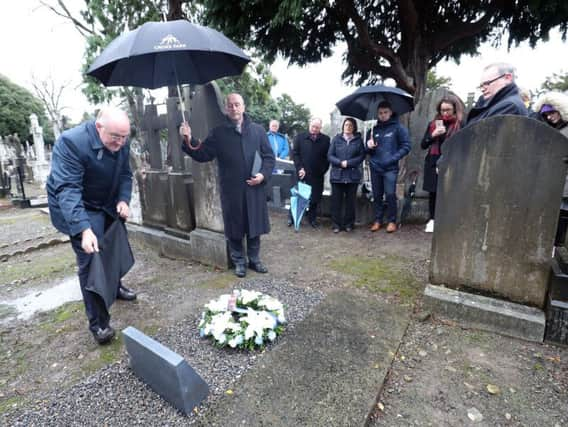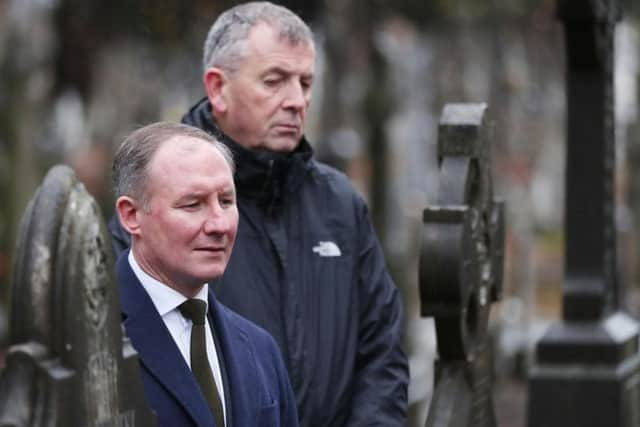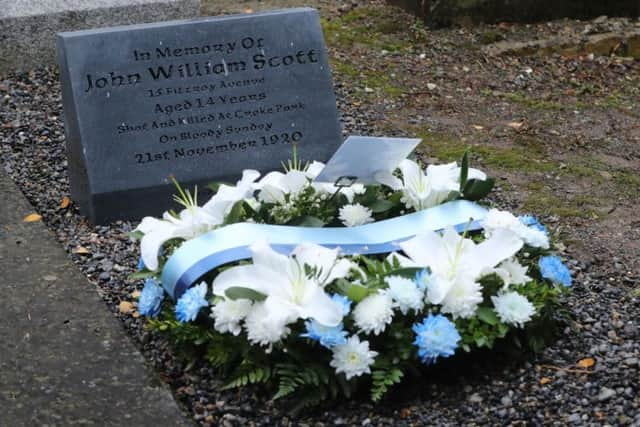Monument unveiled to 14-year-old Croke Park Bloody Sunday victim


John William Scott was killed when British forces opened fire during a GAA match.
On Wednesday, the 98th anniversary of the shooting, the GAA held a ceremony at Scott's previously unmarked grave.
Advertisement
Hide AdAdvertisement
Hide AdScott was one of 14 people killed while attending the Dublin-Tipperary football match, and he suffered a fatal gunshot wound to the chest.


Tipperary player Mick Hogan, 24, was the only footballer killed on the day, and he was shot while trying to escape the pitch.
Scott was one of three children killed in the tragedy and among eight of the victims buried in unmarked graves.
People at the time often did not mark the graves as they were opposed to drawing attention to the tragedy, which has been classed by historians as one of the darkest days in Irish history.
Advertisement
Hide AdAdvertisement
Hide AdGAA president John Horan unveiled the monument as part of the association's Bloody Sunday Graves Project which has been identifying the graves of those killed.


He said: "We can all empathise with him, of going down to Croke Park to watch a game of football.
"But Billy, as he was known, unfortunately never came home, and his life was taken from him.
"His father had to encounter being given his glasses and tie pin as an indication that Billy had been fatally wounded on the pitch.
Advertisement
Hide AdAdvertisement
Hide Ad"A tragedy for his family, a tragedy for our country, and unfortunately Billy has no remaining family among us, but we are here as his GAA family to acknowledge and remember him, and to put this stone in place so he can be remembered as a victim of that tragic day."
The project hopes to have every unmarked grave recognised with a monument before the centenary in 2020.